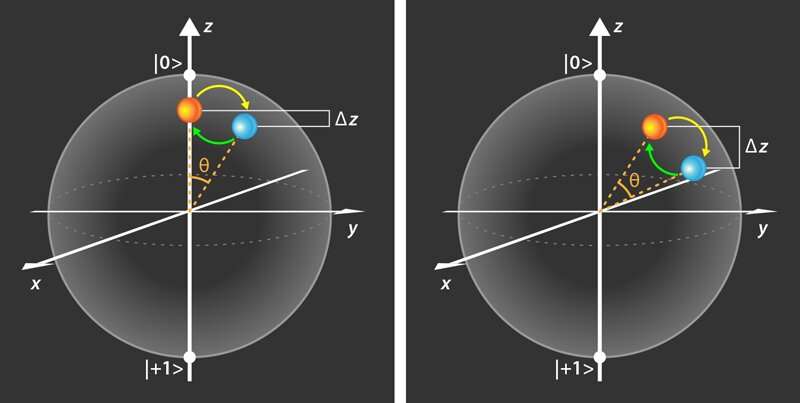March 25, 2019 report
Researchers measure quantum power increase in quantum boost engine for the first time

An international team of researchers has measured a quantum power increase in a quantum boost engine for the first time. In their paper published in the journal Physical Review Letters, the group outlines their experiments with quantum boost engines and what they learned.
Physicists have studied quantum heat engines for many years—they work in ways similar to classical heat engines, but their "working fluid," which behaves in ways reminiscent of steam in a steam engine, can be in a coherent superposition. This has led many in the field to wonder if quantum engines could actually perform better than the classical engines we see around us every day. Just four years ago, a team at Hebrew University of Jerusalem claimed to have found the answer, reporting a theory that suggested that quantum engines could, indeed, be more efficient than classical engines. In this new effort, the researchers have conducted experiments showing that the theory was correct.
In their experiments, the researchers built a quantum heat engine by starting with a nitrogen vacancy (NV) in the center of a diamond—they suggested its two lowest energy levels represented the two levels of a qubit, and in this case, served as the working fluid. The role of two thermal baths was played by higher energy levels. The researchers placed their NV in a magnetic field, which resulted in a reversal of the energy levels, representing the initial state of the engine. A work stroke was instigated by firing a microwave pulse at the NV, which forced the qubit to rotate at a tunable angle. The rotation of the qubit reduced the amount of energy in the center of the NV, which the team extracted. The researchers then fired a green laser at the NV, forcing the qubit levels to couple with thermal baths, which made the centers return to their beginning state. The researchers repeated the experiment 100,000 times, changing cycle times. They report that for small qubit rotation angles, the power output was much higher than for the same type of engine with no coherence—demonstrating that their engine was more efficient than a classical engine.
More information: James Klatzow et al. Experimental Demonstration of Quantum Effects in the Operation of Microscopic Heat Engines, Physical Review Letters (2019). DOI: 10.1103/PhysRevLett.122.110601 , arxiv.org/abs/1710.08716
Journal information: Physical Review Letters
© 2019 Science X Network




















